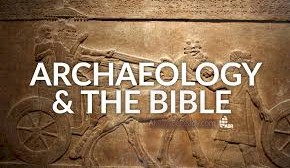Archaeology is Verifying the Bible
More and more there is archaeological and scientific evidence proving the Bible is true. Some of the books above give information on what scientists are finding that proves the Creation Story, the Flood, Jesus, etc.
Because there are so many websites on Archaeology we have not taken the time to share all the discoveries that prove the validity of the Bible.
There is one thing we want to make clear regarding relics and artifacts that appear to defend the Bible. Not everything that is presented as real is real. We believe there are many hoaxes and false artifacts. (Just like there was the false artifacts of prehistoric man.) For us, unless the artifact is found at an actual dig with a variety of witnesses, we do not accept the artifact as reliable. With the technology of today, individuals can create false relics. This said, there are plenty of reliable relics that even skeptics cannot deny.
Artifacts/Relics
Here are just a few relics that confirm statements that are found in the Bible:
PONTIUS PILATE—An inscription at a Roman theater in Caesarea Martima reading, “Pontius Pilate, prefect of Judea”.
CAIAPHAS—The discovery of an ossuary, a stone box used for retaining bones of the deceased, inscribed with the name of Caiaphas, the high priest who presided over the trial of Jesus shortly before his crucifixion.
HITTITES—The Hittites were once thought to be a Biblical legend, until their capital and records were discovered at Bogazkoy, Turkey.
KING DAVID—An inscription found in Northern Israel mentioning King David’s dynasty. The inscription is the oldest reference to any Biblical figure outside the Bible.
SOLOMON—Many thought the Biblical references to Solomon’s wealth were greatly exaggerated. Recovered records from the past show that wealth in antiquity was concentrated with the king and Solomon’s prosperity was entirely feasible.
KING SARGON—It was once claimed there was no Assyrian king named Sargon as recorded in Isaiah 20:1, because this name was not known in any other record. Then, Sargon’s palace was discovered in Khorsabad, Iraq. The very event mentioned in Isaiah 20, his capture of Ashdod, was recorded on the palace walls. What is more, fragments of a stela memorializing the victory were found at Ashdod itself.
KING BELSHAZZAR—Another king who was in doubt was Belshazzar, king of Babylon, named in Daniel 5. The last king of Babylon was Nabonidus according to recorded history. Tablets were found showing that Belshazzar was Nabonidus’ son who served as coregent in Babylon.
EBLA ARCHIVE—The discovery of the Ebla archive in northern Syria in the 1970s has shown the Biblical writings concerning the Patriarchs to be viable. Documents written on clay tablets from around 2300 B.C. demonstrate that personal and place names in the Patriarchal accounts are genuine. The name “Canaan” was in use in Ebla, a name critics once said was not used at that time and was used incorrectly in the early chapters of the Bible.
Ancient customs reflected in the stories of the Patriarchs have also been found in clay tablets from Nuzi and Mari.
It does not take much time at all to find on the Internet multitudes of archaeological evidences of the validity of the Bible as a historical book.
Archaeology and the Bible Websites
Bible Believer’s Archaeology
Biblical Arcaheology Society
ChristianAnswers.net/archaeology
Science Related Websites
Answers in Genesis
Creation Ministries International
Evidence for God
Institute of Creation Research
Reasons to Believe
